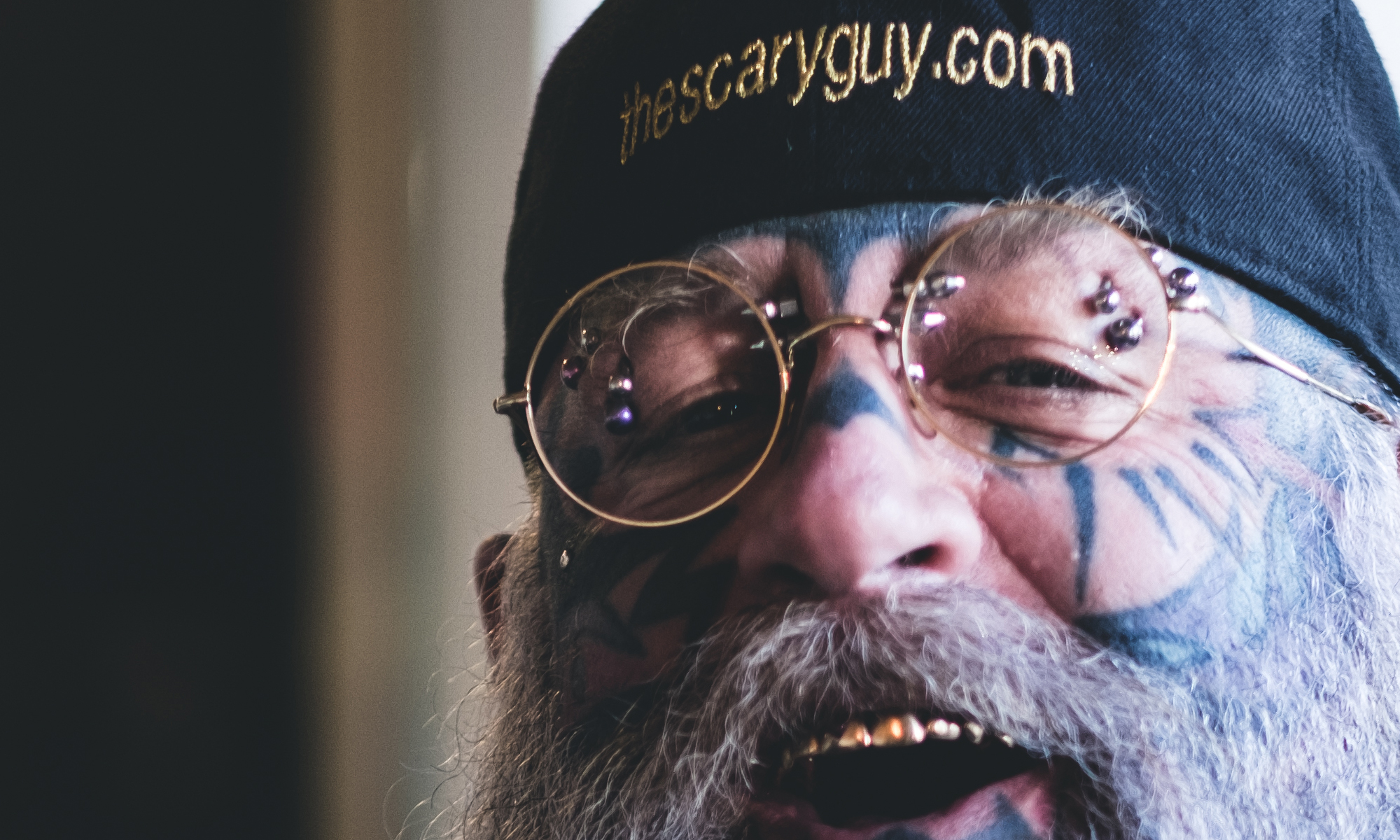Unveiling The Scary Guy: Who Is This Mysterious Figure?
From ancient myths to blockbuster films, the archetype of the scary guy has evolved, taking on new forms while retaining its core elements of fear and fascination. But what makes this figure so compelling? Why do we find ourselves drawn to characters who evoke such primal emotions? In this article, we'll explore the origins, characteristics, and cultural significance of the scary guy, unraveling the mystery behind this timeless archetype. The scary guy is more than just a trope; he represents the darker aspects of human nature that we often suppress or ignore. He embodies our fears, insecurities, and the unknown, serving as a mirror to our deepest anxieties. Whether it's the brooding vampire, the silent killer, or the reclusive genius, these characters tap into universal themes of power, isolation, and morality. Their stories resonate with us because they challenge our perceptions of good and evil, forcing us to confront uncomfortable truths about ourselves and society. By examining the scary guy through various lenses—historical, psychological, and cultural—we can gain a deeper understanding of why this archetype continues to dominate our collective imagination. As we delve into the world of the scary guy, we'll uncover the traits that define him, the roles he plays in storytelling, and the impact he has on our psyche. From his origins in folklore to his modern-day incarnations, we'll explore how this archetype has evolved while maintaining its core essence. Along the way, we'll answer pressing questions like "What Makes a Scary Guy So Captivating?" and "Can a Scary Guy Be a Hero?" By the end of this journey, you'll have a newfound appreciation for the complexity and depth of the scary guy archetype, as well as a better understanding of why he continues to haunt our dreams and inspire our stories.
Table of Contents
- Biography: The Life and Times of a Scary Guy
- What Are the Defining Traits of a Scary Guy?
- Why Are We Drawn to Scary Guys?
- How Does Culture Shape the Scary Guy Archetype?
- What Makes a Scary Guy So Captivating?
- Can a Scary Guy Be a Hero?
- What Impact Does the Scary Guy Have on Pop Culture?
- Where Is the Scary Guy Archetype Headed in the Future?
Biography: The Life and Times of a Scary Guy
To better understand the scary guy archetype, let's take a closer look at a fictional yet representative example. Below is a table detailing the personal information and bio data of a character who embodies the essence of the scary guy:
| Attribute | Details |
|---|---|
| Name | Victor Kane |
| Date of Birth | October 31, 1975 |
| Place of Birth | Black Hollow, Maine |
| Occupation | Reclusive Author |
| Notable Works | "Whispers in the Dark," "The Silent Stranger" |
| Physical Traits | Tall, pale complexion, piercing gray eyes, often seen in a long black coat |
| Personality | Brooding, introspective, enigmatic, with a penchant for solitude |
| Known For | His eerie presence, cryptic behavior, and ability to unnerve those around him |
Victor Kane serves as an archetype of the scary guy, blending mystery, intellect, and a touch of danger. His life and works reflect the traits that make the scary guy so compelling, from his reclusive nature to his ability to evoke fear and fascination in equal measure. While fictional, characters like Victor Kane help us explore the real-world impact of the scary guy archetype on storytelling and culture.
Read also:Exploring Odia Mms Video Trends Impact And Insights
What Are the Defining Traits of a Scary Guy?
The scary guy archetype is characterized by a set of traits that make him both intimidating and intriguing. These traits are often exaggerated in fiction but can also be found in real-life individuals who evoke a similar sense of unease. Let's break down the key attributes that define the scary guy and explore why they resonate so deeply with audiences.
Physical Appearance: The Power of First Impressions
One of the most immediate ways the scary guy establishes his presence is through his physical appearance. Often tall and imposing, he exudes an aura of authority and danger. His features might include sharp cheekbones, piercing eyes, or an unkempt appearance that hints at a troubled past. Clothing also plays a significant role; dark colors, long coats, and disheveled attire contribute to his mysterious and unsettling vibe. These visual cues tap into our primal instincts, triggering a fight-or-flight response that makes the scary guy unforgettable.
Why Do We Judge a Scary Guy by His Looks?
Human beings are naturally wired to assess threats based on appearance, a survival mechanism that dates back to our ancestors. A scary guy's menacing look exploits this instinct, making us feel uneasy even before he speaks or acts. This is why filmmakers and writers often emphasize physical traits when crafting a scary guy character—because it instantly communicates danger and intrigue.
Personality Traits: The Mind Behind the Mystery
Beyond his appearance, the scary guy's personality is what truly sets him apart. He is often portrayed as brooding, introspective, and emotionally distant. These traits create a sense of unpredictability, leaving others unsure of his intentions. His silence can be deafening, and his actions are often shrouded in ambiguity, making it difficult to determine whether he is a friend or foe.
- Brooding Nature: The scary guy is often lost in thought, giving off an air of mystery that draws people in.
- Emotional Restraint: He rarely shows vulnerability, which adds to his enigmatic allure.
- Unpredictability: His actions are often unexpected, keeping others on edge and heightening tension.
Is the Scary Guy Always a Villain?
While the scary guy is often cast as a villain, this isn't always the case. His traits can also make him a compelling anti-hero or even a misunderstood protagonist. For example, characters like Severus Snape from the "Harry Potter" series or Batman's Bruce Wayne embody the scary guy archetype while serving as heroes in their respective stories. This duality adds depth to the archetype, challenging our perceptions of morality and redemption.
Behavioral Patterns: Actions Speak Louder Than Words
The scary guy's behavior is another defining characteristic. He often operates on the fringes of society, preferring solitude and avoiding unnecessary interaction. When he does engage with others, his actions are calculated and deliberate, leaving a lasting impression. Whether it's a cryptic warning, a sudden act of violence, or an unexpected act of kindness, his behavior keeps others guessing and heightens the tension surrounding him.
Read also:Charissa Thompson The Journey Of A Versatile Sports Broadcaster And Media Personality
In summary, the scary guy archetype is defined by a combination of physical, personality, and behavioral traits that evoke fear, fascination, and curiosity. These traits work together to create a character who is both intimidating and compelling, leaving a lasting impact on audiences and readers alike.
Why Are We Drawn to Scary Guys?
The allure of the scary guy archetype goes beyond mere fascination with danger or mystery. On a psychological level, this figure taps into deep-seated human emotions and instincts, offering a complex interplay of fear, intrigue, and even attraction. Understanding why we are drawn to scary guys can provide valuable insights into human behavior and storytelling.
The Psychology of Fear: Why Do We Crave the Scary?
Fear is a primal emotion that has played a crucial role in human evolution. It serves as a warning system, alerting us to potential threats and helping us survive. However, fear also has a paradoxical quality—it can be thrilling and even enjoyable in controlled settings. This is why horror movies, haunted houses, and thrillers are so popular; they allow us to experience fear in a safe environment. The scary guy embodies this duality, offering both a threat and a source of excitement.
What Makes the Scary Guy So Thrilling?
The scary guy's unpredictability is a key factor in his appeal. He represents the unknown, a realm that humans are naturally curious about but also wary of. This combination of curiosity and caution creates a tension that is both unsettling and exhilarating. When we encounter a scary guy in a story, we are drawn into a psychological tug-of-war: part of us wants to flee, while another part is compelled to stay and uncover his secrets.
The Dark Side of Attraction: Why Do We Find Scary Guys Irresistible?
Attraction to the scary guy is not just about fear; it also involves elements of admiration and intrigue. Often portrayed as intelligent, resourceful, and self-reliant, the scary guy embodies traits that are traditionally seen as desirable. His confidence and independence can be magnetic, drawing others to him despite—or perhaps because of—his intimidating nature.
- Power Dynamics: The scary guy often wields power, whether physical, intellectual, or emotional. This dominance can be appealing, as it challenges others to rise to the occasion.
- Mystery and Intrigue: His enigmatic nature sparks curiosity, encouraging others to peel back the layers and discover what lies beneath.
- Forbidden Appeal: The scary guy often represents the "forbidden fruit," someone who is off-limits or dangerous, which can heighten attraction.
Can Fear and Attraction Coexist?
Yes, fear and attraction can coexist, and the scary guy archetype is a perfect example of this phenomenon. Psychologists refer to this as the "excitation transfer theory," where the heightened emotions from fear can intensify feelings of attraction. In stories, this dynamic often plays out in romantic subplots, where a character is drawn to the scary guy despite his dangerous qualities. This tension between fear and desire adds depth to the narrative and keeps audiences engaged.
The Role of Empathy: Can We Relate to the Scary Guy?
While the scary guy may seem distant and unapproachable, many stories delve into his backstory to reveal the vulnerabilities and pain that shaped him. This exploration of his humanity allows audiences to empathize with him, even if they don't condone his actions. By humanizing the scary guy, storytellers create a more nuanced character who challenges our perceptions of good and evil.
In conclusion, the scary guy's appeal lies in his ability to evoke a wide range of emotions, from fear and curiosity to admiration and empathy. This psychological complexity makes him a compelling figure in storytelling, offering audiences a chance to explore the darker aspects of human nature while satisfying their craving for excitement and intrigue.
How Does Culture Shape the Scary Guy Archetype?
The scary guy archetype is not a static figure; it evolves and adapts to reflect the cultural, social, and historical contexts in which it appears. From ancient myths to modern media, the scary guy has taken on various forms, each shaped by the values, fears, and aspirations of its time. Understanding how culture influences this archetype provides valuable insights into its enduring appeal and relevance.
Historical Roots: The Origins of the Scary Guy
The scary guy archetype has deep historical roots, dating back to ancient myths and folklore. In these early stories, he often appeared as a supernatural being or a monstrous figure, embodying the fears and uncertainties of pre-modern societies. For example, creatures like the Minotaur in Greek mythology or the Wendigo in Native American folklore served as cautionary tales, warning people of the dangers that lurked beyond the safety of their communities.
How Has the Scary Guy Evolved Over Time?
As societies evolved, so did the scary guy archetype. During the Gothic era of the 18th and 19th centuries, he took on a more human form, appearing as the brooding anti-hero or the tormented genius. Characters like Mr. Hyde from "Dr. Jekyll
What Does DGAF Mean? A Comprehensive Guide To Understanding This Popular Acronym
Did Michael J Fox Die? The Truth Behind The Rumors
Discover The Best Tacos And More At Locos Grill Doral: A Culinary Experience

Photos The Scary Guy

Metallica Scary Guy Decal Sticker